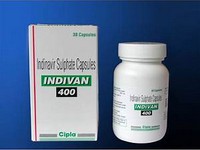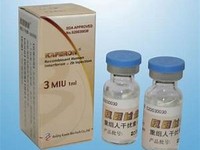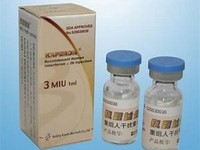Bemiparin sodium

Bemiparin sodium
CLINICAL USE
Prophylaxis of thromboembolic disorders of venous originTreatment of deep vein thrombosis and pulmonary embolismAnticoagulation of the extracorporeal circulation during haemodialysis DOSE IN NORMAL RENAL FUNCTION
Prophylaxis DVT: Moderate risk surgery, 2500 units once —daily for 7–10 daysHigh risk surgery, 3500 units once daily —for 7–10 daysTreatment DVT and PE: 115 units/kg every 24 hours for 5–9 daysAnticoagulation of extracorporeal circuits – see ‘Other Information’ PHARMACOKINETICS
Molecular weight :3600 (3000–4200) %Protein binding :– %Excreted unchanged in urine : – Volume of distribution (L/kg) :–half-life – normal/ESRD (hrs) :5–6 DOSE IN RENAL IMPAIRMENT
GFR (mL/MIN)
20 to 50 : Dose as in normal renal function 10 to 20 : Dose as in normal renal function for prophylaxis only. <10 : Dose as in normal renal function for prophylaxis only. DOSE IN PATIENTS UNDERGOING RENAL REPLACEMENT THERAPIES
CAPD :Not dialysed. Dose as in GFR <10 mL/min HD :Not dialysed. Dose as in GFR <10 mL/minHDF/high flux :Dialysed. Dose as in GFR <10 : mL/minCAV/VVHD :Not dialysed. Dose as in GFR=10–20 mL/min IMPORTANT DRUG INTERACTIONS
Potentially hazardous interactions with other drugsAnalgesics: increased risk of bleeding with NSAIDs – avoid concomitant use with IV diclofenac; increased risk of haemorrhage with ketorolac – avoid concomitant usedrotrecogin alfa: manufacturer advises to avoid use of high doses of heparin with drotrecogin alfaNitrates: GTN infusions increase the excretion of bemiparin; anticoagulant effect reducedUse with care in patients receiving oral anticoagulants, platelet aggregation inhibitors, aspirin or dextran ADMINISTRATION
Reconstition
– Route
SC Rate of Administration
–Comments
– OTHER INFORMATION
In extracorporeal circulation during a 4-hour or less haemodialysis session, for patients <60 kg, 2500 units bemiparin is administered into the arterial line of the circuit at the beginning of the session; for patients >60 kg, 3500 units bemiparin is usedAdditional doses may be required if using LMWHs for anticoagulation in HDF1.4 mg of protamine should neutralise the effect of 100 units of bemiparinLow molecular weight heparins are renally excreted and hence accumulate in severe renal impairment. While the doses recommended for prophylaxis against DVT and prevention of thrombus formation in extracorporeal circuits are well tolerated in patients with ESRF, the doses recommended for treatment of DVT and PE have been associated with severe, sometimes fatal, bleeding episodes in such patients. Hence the use of unfractionated heparin would be preferable in these instances
See how to identify renal failure stages according to GFR calculation
See how to diagnose irreversible renal disease
Home







.JPG)

